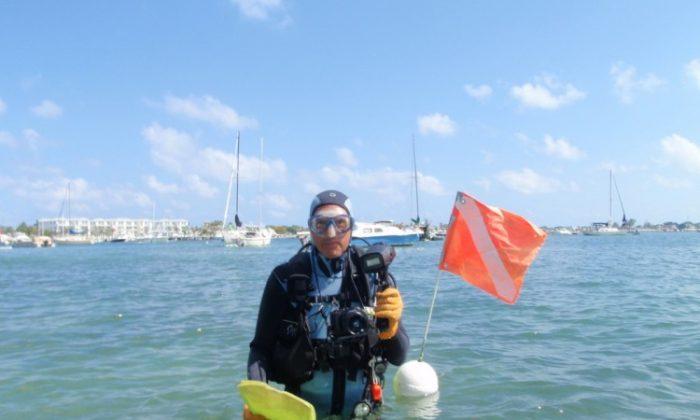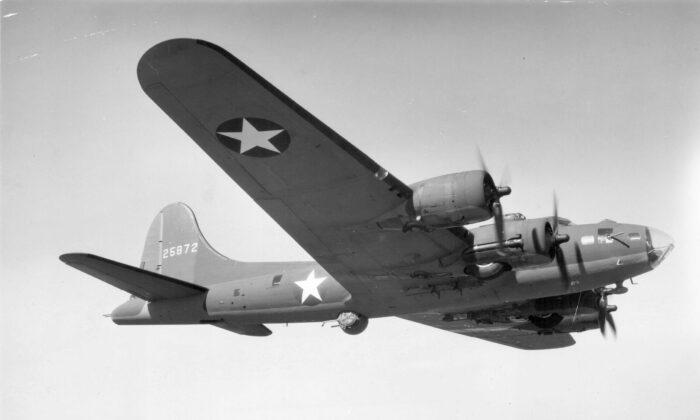Digital photography with computerized innovations has not changed the basic rules of underwater photography. In some cases ability to take pictures in low light conditions then correct them with various computer software programs is a boon. Using film, a picture that was too dark or too light was always a discard. Cropping was a problem and recopying on film reduced the resolution. Editing had limits. The basic premise that a good photograph can be taken only once still applies. Digital does not mean sloppy.
Digital photographic equipment for underwater use is not inexpensive. There are housed units that cost thousands of dollars depending on the camera system. Some underwater cameras range from about $500 to $1200.
No matter what camera is selected, knowing its limitations is important. Read the instruction manual. Features that are not often used can be skipped over until the very macro-close up aspect of the flash, pictured with a rose, is wanted. There are important aspects and a learning curve that must be reached with every new piece of equipment. Do not wait until you are aboard the dive boat to try and figure out your new camera.
O rings and seals are priority inspection items. I have one digital camera that has a slight bend in the housing. That means the O ring becomes bent at an eccentric angle. Some manufacturers realize then disregard the plain fact that O rings provide integral seals for their units. O rings are round or oblong. Wild curves and bends enhance the chance of making a mistake or having a piece of the O ring miss the channel when the camera is closed.
One major film camera manufacturer brought out an underwater camera in its series that “improved” previous models. It was a nightmare. Divers often brought them up flooded. The reason was the bend in the O ring seal. In selecting an underwater camera and housing insure that O rings are intelligently designed so that they are perfectly round or oblong without bends. That is why they call them O rings. When SeaLife, one of the world’s major underwater camera manufacturers, brought out their new DC 1400 camera and housing, they used a perfectly oblong O ring. A great improvement over the bend in their DC 1200 housing that required special attention before closing. Kudos to their engineers.
O ring care and maintenance is very important. Check the O ring with your finger before every use. Be sure there are no grains of sand or foreign objects on it. Use O ring grease to improve the seal and enhance the O ring’s flexibility and suppleness. Check the O ring channel to be sure no sand grains, hairs or other objects have gotten into it that will disrupt the integrity of the seal once the camera or housing is closed.
Before sealing the unit check to be sure no hairs, dust or debris is on the camera lens or inside the camera housing’s port. Many great pictures have been ruined by hairs in front of the lens. I took a whole sequence of underwater footage with Mel Fisher, the late fabled underwater treasure diver, only to have the motion picture film come back from the lab with a hair across the frames. Grrrrr—I had just had the camera serviced and put it in use without checking the front housing port myself. Leave nothing to chance. Always check. Photo shop programs notwithstanding, a hair or dirt in front of the lens or on the housing’s port will ruin the image.
Dry packs come with many underwater digital cameras. Some are silica gel BBs, some are cylinders that fit into the housing. Moisture inside the port means it is fogged up. A fogged lens underwater ruins pictures. Remember that the little silica gel packets or BBs can flake off and put foreign matter in front of the lens so use them carefully. Some manufacturers recommend putting these drying packets into a microwave oven after use to rid them of moisture. Always be sure they do not leak the material inside before putting them into your housing.
Fogging occurs when temperature changes. Same principle as windows of an automobile. Anti-moisture packs inside the housing will help to some degree. Keep the camera out of the sun. All too often I see careless storage of cameras on dive boats. Some are left in the direct sun, lens up. When the camera is taken below the lens immediately fogs up. Temperatures can build up when a housed unit is left in the sun and the water is colder than the air. High temperatures and direct sun on cameras and housings are not compatible. Manufacturer’s instruction manuals make it clear: keep cameras and housings out of direct sunlight.
I use a plastic dive box for my gear. It fits under the seat on most dive boats. Not only does it keep my gear in order and out of the way, it provides protection for my camera and is out of the sun. My camera is less likely to be kicked or washed overboard in my box. The box is secured by a line or bungee cord to the boat’s bench supports. My box stays in place in rough seas. One hapless photographer put his camera in the tank holder next to him. Of course when a diver returned to his seat, his tank crushed it.
Innovate the way your camera is attached to you underwater. In two weeks four cameras were lost by divers on the dive boat I use. They were never found again. I use cameras that I can manage while doing other things underwater. That includes taking students and inexperienced divers below. I like to offer them photos of themselves after the dive. The ability to e-mail photographs makes that handy. It is a much easier process than when I shot only color slide film.
There are times when I must abandon my camera entirely and use both of my hands. I carry a flag below when drift-diving in the Gulf Stream on Florida’s Atlantic coast. One hand is therefore always occupied until I can hook the flag line safely into the reef. It takes a moment for me to find a spot and make sure the reef hook will not do any damage to coral. The digital camera system I use is perfectly suited for that. It does not interfere with nor detract from my instruction or dive guiding.
I do not like to have a camera handed to me when I get in the water. Of course in certain circumstances that is imperative. I always brief the deck hand or divemaster just how I want it done. I have a specific way I hand my camera and strobe up to the boat. The connectors and wires from the strobe to the camera are fragile and costly. I hand the unit with the camera strap over the strobe handle so it can be taken as one complete unit. Every single time I neglected to tell a new divemaster or deckhand how to handle my camera when I handed it up, they held it by the connector cords.
I do a backward entry off the boat, not a giant stride. This enables me to shield the camera with my body from impact with the water. This is my method. I prefer to jump in with my camera and strobe and I do it in a way that does not put impact pressure on my camera. I have a lanyard around my neck. I made it with a soft strap and clips on a bar upon which I mounted the camera. I also clip the camera itself to my BC. Expandable clips with holders are sold inexpensively and are highly useful for that purpose. The line is retractable and stays out of the way until the camera is used. My camera is secured to me in two ways. It is not foolproof but it is added insurance that it will not float away or get lost when my attention is elsewhere or the current picks up. I attach fishing weights, found below, to the bottom of the camera to make it neutral underwater, otherwise the unit I am using floats.
Work close to the subject. Underwater conditions are rarely perfect. Most of the time photographers I take below snap away fifteen feet from their subject. The incorporated camera flash goes off and I can see particles in the water illuminated by the strobe light. That means back scatter. It is akin to shooting pictures with flash in snow. Each flake or particle acts like a mirror and reflects the light back on the image.
Back Scatter ruins a photograph. It can be reduced by working as close as the focal length and subjet allow underwater. Focal length is important since working too close with the average underwater digital camera means the picture will be out of focus. If the camera lens range is two-feet to infinity, do not work closer than two feet. Depending on light conditions, a digital screen is difficult to see clearly underwater. The image may not look out of focus until it is transferred to a computer and can be seen in larger format.
Another way to reduce back scatter is to angle the strobe backward. The subject is illuminated but the light does not strike particles in the water directly, rather from the back. That is why it is always better to have a strobe that can be detached from the camera bracket underwater and angled with the free hand.
Paul Tzimoulis, well known underwater photographer, that was at the helm of a now defunct dive magazine for many years, used a bracket that looked like a croquet mallet and was equally as long. He manipulated his strobe light at the end of it even in murky water to obtain excellent photographs.
A camera’s incorporated flash shoots strobe light straight ahead. Back scatter is inherent in its use where there are particles floating in the water. When shooting a photo, many underwater photographers never remove their strobes from the arms and brackets underwater. Many units are sold with brackets that have buttons that make strobe removal easy. Creative use of light is an important aspect of composition. It is a question of practice and experience.
An underwater flash or strobe will not carry that far. When I used my film camera systems my absolute range was ten feet. With the new wave of strobes designed for digital cameras consider five feet a good range for most of these smaller flash units. Work as close as possible to the subject.
Digital photography has not changed the adage that “Practice makes perfect.” In underwater photography practice is especially important. Digital has made access to the photograph instantaneous. This is the best way to learn. In the past when I taught underwater photography using slide film, pictures were shot in the morning and developed with the photographers that afternoon. There was a time delay but it enabled critical review of the pictures. Mistakes could be corrected on the next dive and improvements made. Of course the other adage in underwater photography, or photography in general, is, “A picture can be taken only once.”
Most digital cameras, below the several thousand dollar range where expensive land SLR cameras are put in elaborate metal or plastic housings, have a shutter delay. That is infuriating. Underwater photography is difficult enough with moving critters as it is. A second’s delay means that anticipation must be had and judgment made when to depress the shutter. Then the camera must be held steady until the picture is taken. Digital cameras are usually auto-focus which means the camera may use a pre-flash before the picture is taken so the camera can focus properly. These delays add to the necessity to plan a picture anticipating the time it will take before the image is captured.
I took 75 pictures yesterday using my new SeaLife DC 1400 camera and strobe. Many of a diver posing with a starfish. The diver wasn’t a professional model so I had to time my shutter release to coincide with her breathing rhythm. Not easy with my camera’s shutter delay. Many shots have bubbles over her face from exhalations into the regulator.
The boon of digital photography is that hundreds of images can be captured on one photo card. No more do I have to surface after my 36-exposure roll of slide film is used up to reload my camera. I must, however, anticipate the shot since the camera has a shutter delay. It is a trade-off: compact, handy and unobtrusive versus a large housed land camera that is bulky and inconvenient.
Buoyancy control is also an important aspect of underwater photography for camera operator and model. On yesterday’s dives my buddy had buoyancy problems. That meant every time she was positioned a hand would go down on the sandy bottom and throw up a cloud of sand. I had to wait for the sand to clear. Invariably by the time it did she would put a hand on the bottom again and throw up another cloud. If there is a current then position so that any silt stirred up is carried away from the field.
All of us make a little mess here and there underwater. We try to position ourselves to capture an image and in so doing stir up a little sand. Our regulator bubbles scare away a fish just as we are about to take the picture. Buoyancy control is important to prevent collisions with the reef and to keep the camera steady. In modeling buoyancy control is imperative.
I have settled on the newly developed SeaLife digital DC 1400 camera and its external strobe. The company, based in New Jersey with distributors in the UK and around the world, listened to underwater photographers. Realizing that divers wear gloves they moved the mode button to the back of the camera. The on-off button is away from the shutter release button. The shutter release has been placed in its own field handy to right-handed photographers and surrounded by a stainless steel plate. I no longer hit the video mode by mistake.
Keys control other functions. They are long rectangles, called piano keys, on the back of the unit. They are convenient and can be used even with gloved hands. I never use them underwater. I set up my camera before I go diving. That’s it. The unit only has to be turned on and off and fired. There is a zoom feature but I never use that underwater. I do not want to see the picture I’ve just taken. I do not want to delete anything while on the dive. I do not want to go to the menu and I do not want to focus. I want to observe and concentrate on composition.
The new DC 1400 does not need a clip on wide angle lens. The lens system of the new SeaLife camera incorporates wide angle using a flat port. I no longer have to remove the wide angle lens underwater to be sure no air bubbles were trapped between the lens and housing. I do not have to remove it when I see a shark at a distance and want to maximize its size in the photo. I won’t lose the wide angle lens, as I did once, when its lanyard unclipped. Luckily I saw it happen and retrieved it quickly. A company that makes improvements and listens to their customers is progressive.
A photograph is a moment in time. It is captured in a fraction of a second. Whether it is good or bad depends on the photographer’s eye and skill. That has not changed. That the mechanics of the thing have been simplified and made accessible to many more people does not alter the basic precepts of underwater photography.
Concentration is imperative both in preparation and when composing a picture. Taking a camera underwater adds to the difficulty of a dive. It is akin to talking on a cell phone while driving a car on the highway. Attention to the dive is the first concern.
Underwater photography enhances interest in the ocean realm. It offers a way to share the wonders of undersea life with family and friends. Figure out the rules for your particular camera, simplify your technique and equipment and enjoy documenting the beauty beneath the sea.






Friends Read Free